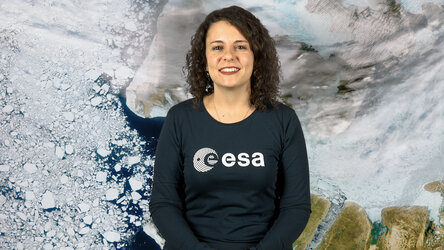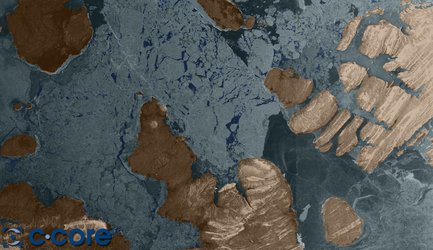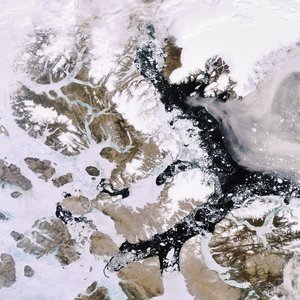

Canadian Arctic Archipelago
The Copernicus Sentinel-3 mission takes us over part of the Canadian Arctic Archipelago. Most of the archipelago is part of Nunavut – the largest and northernmost territory of Canada.
The archipelago covers an area of around 1 500 000 sq km and consists of 94 major islands and more than 36 000 minor ones. The archipelago is bound by the Beaufort Sea to the west and by Hudson Bay and the Canadian mainland to the south – largely obscured by clouds in this image.
The various islands of the Canadian Arctic Archipelago are separated by a series of waterways collectively known as the Northwest Passage. In the past, the Northwest Passage has been impassable owing to its thick, year-round sea ice.
However, owing to significant changes in the Arctic climate, summer sea ice has decreased substantially and has led to an increasing number of vessels navigating through this once-impossible route.
In this image, captured on 27 July 2019, sea ice can be seen in the waterways of the Canadian Archipelago, as well as broken-up sea ice in the Beaufort Sea. Numerous, large ice floes are seen at the southern margin of the pack ice, and can be seen drifting southwards. As the pack ice drifts and encounters warmer waters, the ice is more prone to rapid melting.
According to the National Snow and Ice Data Center (NSIDC), the sea ice extent in July 2019 declined at an average daily rate of 105 700 sq km – exceeding the 1981 to 2010 average rate of 86 800 sq km per day.
This image was captured in the days when several wildfires were burning in the Arctic, specifically Siberia. In this image, a wildfire can be seen on mainland Canada, along the Mackenzie River, and smoke plumes are visible blowing westwards.
Banks Island – the westernmost island of the Arctic Archipelago – is visible in the centre of the image. The island has a large population of Arctic foxes, as well as caribou, polar bears and wolves. A number of glacial lakes can be seen in emerald green on the east side of the island.
Victoria Island lies to the east of Banks Island, and can be identified with its deeply indented coast. With an area of around 200 000 sq km, Victoria Island is only slighter smaller than the island of Great Britain.
This image is also featured on the Earth from Space video programme.





